Pupil Voice and Agency – DEI Pupil Leaders
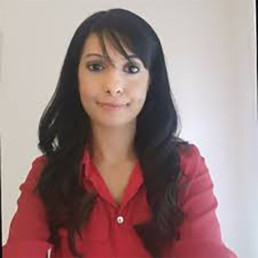
Written by Kiran Satti
Senior Assistant Principal; Primary Trust - Literacy Lead Practitioner; #WomenEd Regional Leader; Contributor to Diverse Educators: A Manifesto.
Diversity, Equity and Inclusion – what does it mean to the children we serve in our school communities?
One of our DEI Pupil Leaders shares what it means to her…
I am very proud of being a DEI leader because it is an important job. It is important because we are helping the children learn about the Protected Characteristics, we are reading important stories to the children to help them become aware and most importantly, help the children understand what it might be like for someone living with some of these Characteristics, such as disability.
The stories she is referring to are our DEI Story Escapes. At the beginning of this year, the newly formed DEI Pupil Leaders (another branch to our Pupil Leadership Team) sat and discussed which books they believed were best representative of each of the Protected Characteristics. Most powerfully, this group of Pupil Leaders were representative of the increasingly diverse learning community they are part of. The DEI Pupil Team have 6 members who are very passionate about equal and human rights – this was evident when I was sharing the Pupil Training, where we learnt about the Protected Characteristics and the importance of understanding intersectionality.
In alignment with the Pupil Training, I also delivered staff training to ensure the teachers and educators shared the same understanding of DEI as the Pupil Leaders. It was important everyone in our school community had a shared language and understanding to draw from as the children started to read the DEI Story escapes to the classes.
Here are some of the Pupil Leader’s favourite DEI Story Escapes:
My favourite DEI Story Escape we have shared so far is There is a Tiger in the garden! There is a tiger in my garden is my favourite book because it has amazing illustrations and lots of emotive language. “Wow!” says Nora is my favourite part of this book because of how beautiful the dragonflies were and how they drew them! This book is about the protected characteristic AGE – it doesn’t matter what your age is, we can all still use our imagination, young or old.
My favourite DEI Story Escape is Pink is for Boys. My favourite page is where blue is for girls and pink is for boys. Ut is my favourite book because it tells us that colours are for everyone – they are not gendered. There are no colours for particular people – all colours are meant for everyone.
Pink is for Boys is my favourite book because it shows us thar all of the colours are for everyone. My favourite pages are the ones with the unform and where it says pink is for girls and boys.
Sulwe is my favourite DEI Story Escape. It is my favourite book because at first she thought she wasn’t pretty because she wasn’t the same skin colour as her sister but then she realised people needed the darkness to rest – my favourite page is where they told her, “When you are the darkest is when you are most beautiful.”
The DEI Story escapes have been an incredible success, mostly because the Pupil Leaders have read and led the discussions. Pupil Voice is at the heart of our DEI work at Wallbrook Primary Academy because they are the future – the pupils are being enabled to use language which is instrumental to creating a future that accepts and nurtures differences.
Developing the power of story, the Pupil Leaders are currently sharing Braille stories with their peers. They lead on teaching their peers how to decode using Braille, and have developed several games to enable the children to learn and practise reading and writing in Braille.
I can not wait to see how DEI continues to grow and the DEI Pupil Leaders continue to flourish into the next academic year!
An Exploration of the Persisting Legacy of Imperial Rhetoric in Modern Education through a Case Study on ‘Eugenics, Race, and Psychiatry in the Cape Colony, 1890-1908: Dr Thomas Duncan Greenlees’
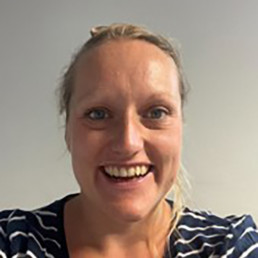
Written by Rosa Legeno-Bell
Rosa is co-founder and Director of Diverse History UK (DHUK); an LGBTQ+ and female-owned business. DHUK provides educational consultancy to address diversification of educational curricula. Rosa has worked in the education sector for over a decade, mainly in inner-city London comprehensives; as a History Teacher, Head of History and Associate Assistant Principal. Rosa graduated with distinction from the University of East Anglia with a Master’s Degree in Modern History.
This blog examines imperial rhetoric around race and eugenics through a case study of colonial psychiatrist Dr Duncan T Greenlees and explores how the legacy of imperialism lives on in the education sector.
Greenlees was the medical superintendent of Grahamstown Asylum in the Cape Colony from 1890–1907, regarded by his peers as an authority on race and eugenics (T. Duncan Greenlees M.D., 1930).
Greenlees’ Theories on the Native Mind
‘[African natives’]… wants are simple and their habits primitive; they are… willing servants, and naturally look up to white people…’ (Greenlees, 1882)
Greenlees maintained that biological and cultural differences between Africans and Europeans explained native mindsets. He attributed native ‘insanity’ to the exposure of ‘savage’ minds to Western civilisation (Swartz, 1995). The myth of primitive natives was key to the justification of British paternalism in the colonies as well as the confinement of natives who refused to conform to their prescribed roles in colonial society (Summers, 2010). In A Statistical Contribution to the Pathology of Insanity (1902), Greenlees declared that:
‘…[if] brought under the artificial influences of civilisation…[the native] …is particularly liable to chest troubles.’
And also claimed:
‘While mania is considered a disease of undeveloped [native] brains, melancholia may be regarded as one of developed [European] brains’
(Greenlees 1902, p. 12).
The falsity that non-whites were incapable of melancholia was supported by later colonial psychiatrists and is still echoed in practice today (Rosenberg, 2019). Greenlees also appealed to the common myth of the unhygienic native, stating they are ‘extremely filthy in habits,’ (Greenlees, 1902. p. 17) a stereotype commonly used to underpin dehumanising imperial rhetoric.
The influence on Greenlees of Victorian hegemony, such as Darwin’s theory of natural selection, is discernible. Darwin’s theory was commonly misapplied by imperialists to claim racial superiority and, under the guise of Social Darwinism, to justify imperial actions (Dafler, 2005). In Insanity Among the Natives of South Africa Greenlees warns:
‘The time will soon come when civilisation will overshadow [native tribes] with its baneful pall, bringing innumerable diseases in its train and ultimately exterminating all races that oppose its progress.’
(Greenlees, 1895, p. 75)
Greenlees’ Principles of Eugenics
‘…how much suffering might be avoided if…men were allowed to exercise the same care in the selection of their mates as they do when breeding their cattle’
(Greenlees, 1892, p. 302).
During the Nineteenth Century, white-working class British people were also dehumanised and infantalised by the British state. The white working classes were integral to imperial rule as they powered the industrial revolution on home soil through cheap labour and terrible working conditions.
Greenlees worked in the Cape Colony after the emancipation of Transatlantic slaves and during the Second Boer War (Facing History and Ourselves, 2018). At this time, it was believed that many South African whites, particularly Afrikaans, were becoming less civilised, mirroring British stereotypes of native peoples (Klausen, 1997). For Greenlees it was paramount that the white race maintained an air of supremacy. (Burdett, 2014), He argued that the breeding of ‘lunatics,’ ‘imbeciles’ and ‘drunks,’ constituted a grave threat to imperial rule (Klausen, 1997).
Greenlees’ also theorised about ‘coloured’ (mixed-raced) people, referring to them as ‘the bastard.’ Highlighting his fears regarding race and degeneracy, he contended:
‘a mixture of white and black blood… seems to present the worst characteristics of both races.’ (Greenlees,1892, p. 71)
Greenlees opined that, mixed-race communities were degenerates and threatened British dominance (Kolsky, 2013), a view mirrored by segregationists in the southern states of America around the same time.
So, Greenlees advocated for people to make genetically ‘wise’ choices over their marriage partners and proclaimed that it is:
‘…absurd… that we should devote more…consideration to the mating of our horses and pigs than we do that of our sons and daughters’ (Greenlees, 1903, p. 11).
The Impact of Colonial Rhetoric around race and class on the Current Education System
‘… decolonising and detoxifying the education regime are a sine qua non for… academics, especially those who are cognisant of the true meaning of education.’
(Nkwazi Nkuzi Mhango, 2018)
Elhinnawy (2022) maintains that a diverse book collection does not suffice and that educators need to honestly explore their own internal prejudices and their origins. While Bentrovato (2018) contends that colonialism is a ‘hallmark of modern world history.’ whose legacies survive because of modern institutions such as education.
But, decolonisation has been controversial. Seemingly concerned, The Department for Education (2022), introduced a guidance on impartiality in schools in 2022 on the back of the growing call to decolonise education.But decolonisation is possible still, as the guidance does not include any additional statutory requirements, and there is still room to decolonise if a range of historical evidence is engaged with and views are not taught as objective fact. The dichotomy between a government and its institutions can cause friction. Leading governmental leadership posts are filled disproportionately by privately educated people (predominantly white and male) who attended Oxbridge colleges. In 2019, 57% of the government’s cabinet and 36% of those who work in the media had attended an Oxbridge university (The Sutton Trust, 2019). Notably, private schools and Oxbridge universities were avid mouthpieces for colonial rhetoric.
Despite the controversy over decolonisation, it is a no-brainer. As diversity increases, decolonisation becomes more urgent –with 43% of young Black people saying that:
‘A lack of curriculum diversity was one of the biggest barriers to…achieving in schools,’(Anna Freud, 2021).
Yet many schools still pursue whitewashed curricula and old-fashioned pedagogies. Critics of decolonisation have argued against it on the basis that we should not eradicate history, but true decolonisation does not entail deleting history, it encourages adding to existing narratives and amplifying historically silenced voices. Another criticism is that decolonisation only considers marginalised black voices, but that is too literal an understanding. Decolonisation believes in amplifying all marginalised voices such as the white working classes who too were downtrodden and exploited for the empire. One compelling reason for decolonisation is that the amplification of many voices and celebration of shared histories may also repair relationships between marginalised communities, too often pitted against each other.
Greenlees provides a significant insight into the ideologies that propped up the British empire, and serve as a shocking reminder of the philosophies on which modern Britain was founded. If educators work together to build a fairer education for our students, then we are playing a part in creating a kinder and more compassionate society for our students and our children.
Read more and find the references here:
5 Ways to Imbed Inclusion and Diversity in EYFS Lessons
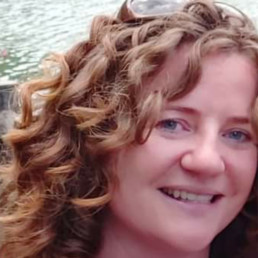
Written by Jess Gosling
An experienced international Early Years teacher, blogger and writer. She is currently writing a book for international teachers, 'Becoming an International Teacher'.
I am currently in my ninth year as an international teacher, and this article was written when I was working in a school with mostly local children in Taiwan. The problem I aimed to solve then was how to showcase and embed diversity and inclusion into our classroom environment.
Therefore, I have developed, and continue to develop here in Poland, a series of ways to bring up issues of diversity, gender, disability, and culture in a way that is relevant, informative, and engaging.
These are big topics for EYFS pupils but there are ways to bring them up organically alongside other areas of learning – often using texts to help naturally raise questions and discussions.
Cultural cues
Although in an international school, the children are from a similar ethnicity and therefore notice differences often.
One example of this was when we viewed a speech over which the guest had a strong Spanish accent. A child remarked, ‘that sounds funny’, and laughed.
As a class, we talked through her view. I related the experience to my own, speaking Mandarin with my ‘funny’ accent. I asked in this case if they would laugh at me. The class was in agreement that they would not. We explored the child’s perception and reasons why, overall, we have accents when speaking another language. I encouraged them to instead think about how smart the speaker was using a different language than their own. We created parallels with their own experience, as bilingual learners.
Gender
We have had a few instances where we have challenged and discussed gender as a class.
A boy in my class expressed his love of ‘Frozen’ and the character of Elsa in particular. He frequently leapt up to sing ‘Let it go’. Gradually, other boys have begun to join him. In this context, however, initially, there were some giggles. We unpicked this reaction and talked about how some girls love ninjas and superheroes and does it matter. Reversing the context helped those children understand that we are free to like whatever we like.
In another situation, I was concerned when several of my children were remarking that a new member of my team was a ‘boy’ as she had very short hair. I could see that the staff member was a little upset by the comments, so I stopped the whole class and I asked them to turn and look at the staff member. We do a lot of work on feelings and it was clear that she was upset. The children who had made the comments paused and looked at the floor. In this instance, I asked the class whether calling out gender names as a joke was a nice thing to do. The class, and the particular children involved, decided as a collective it was not. This behaviour was not repeated.
Discussing individuals who have taken different pathways
Integrity forms part of our school’s ‘learner profile’. To develop their understanding of this concept, I showed a recording of ‘We will Rock You’ by Queen and their frontman, Freddie Mercury, to prompt a discussion about him.
I wanted to illustrate how being honest and true to yourself is as important as being honest to other people.
We looked at how he took a different path in life than what he was expected to do, to remain honest with his hopes and dreams as a musician. The children were incredibly engaged in both the music and his life story.
Recognising cultural differences
When texts are selected carefully, they can illustrate a diverse representation of cultures. This includes environments, rituals, clothing, and religions that differ from my students. Following a book share, we discuss any perceived differences and similarities, encouraging questions.
However, it is important these stories show children living around the world, often with similar experiences to the children. One example is ‘The Proudest Blue’ about a little girl’s first day at school experiencing at the same time her sister’s first day wearing a hijab.
The little girl, Faizah, feels so excited for her sister but instead, other children use harsh words which confuses Faizah.
The children are drawn into the book by the fabulous illustrations. They picked apart what was unkind about the situation but also why others’ may make these remarks. Often I find children are not sure why people would say cruel things to point out a difference. We discussed together how certain words can not only affect one individual (Faizah’s sister) but also ripples to others, who hear and see them.
Showing differences, such as disability, as part of the ‘norm’
Furthermore, I endeavour to show texts which show children and adults with disabilities. One such example is ‘Rumble in the Jungle’, which shows a child in a wheelchair. These messages are more discrete as it is not a central aspect of the book. Additionally, I don’t always point them out. As these differences have been already discussed early in the year, I want the children to recognise, as with different racial identities that diversity such as disability is commonplace and part of our lives.
Indigenous Knowledge is Integral to Diversifying the Curriculum

Written by Rob Power
Dr Rob Power is an award-winning teacher, educational consultant and cultural historian specialising in global history and indigenous knowledge. Before returning to academia as a lecturer at the London School of Economics and Political Science in 2018, and more recently as founder of Powerful Histories, Rob was Head of History and Politics at a leading independent school in Oxfordshire.
Indigenous Knowledge should be central to curriculum diversity initiatives
On 13th September 2007, the General Assembly of the United Nations adopted The Declaration of the Rights of Indigenous Peoples. Enshrined in the document was a commitment to uphold standards for the survival, dignity and well-being of the Indigenous peoples of the world.
In recent years, there has been a growing recognition of the importance of incorporating indigenous knowledge into education. Indigenous knowledge refers to the unique knowledge, traditions, practices, and beliefs of indigenous communities. It is knowledge that has been passed down from generation to generation and encompasses ways of knowing, being, and doing that are rooted in a deep understanding of the natural world and the relationship between humans and the environment.
As schools throughout the world begin to consider ways in which to develop sustainable practices, the prioritisation of connection to our living environment occupies centre stage. It is in this context that Indigenous knowledge can be particularly impactful. Inclusion of non-appropriated Indigenous knowledge into our teaching – on issues such as the environment, community, climate, medicine, economics and science – isn’t just about creating a culturally relevant and culturally responsive curricula. It can also help to create a more equitable and inclusive learning environment that recognises and values diversity within our own communities.
The community-based approach to problem-solving that lies at the core of Indigenous knowledge systems should have a place in every school. Whilst honouring the robust and deep knowledge held by Indigenous communities, we help our learners to bridge divisions between cultures and constructed knowledge hierarchies and develop a holistic understanding of history, culture and the natural world. It can be a powerful tool for promoting social justice, encouraging pupils to critically reflect on the effects of forced assimilation, cultural genocide, and ongoing social and economic marginalisation of indigenous peoples.
Indigenous Knowledge in the Curriculum
Incorporating Indigenous knowledge into our teaching should go beyond rudimentary case studies. Prioritising the voices and experiences of indigenous peoples and communities, involving indigenous community members in design of curriculum and assessment materials, and utilising knowledge acquisition pathways of the communities we are studying is essential. Prioritising Indigenous knowledge thus not only affords an opportunity to diversify our curriculum, but to globalise our teaching.
Valuing, respecting, and integrating Indigenous knowledge into the curriculum involves developing an understanding of knowledge and knowledge acquisition within Indigenous communities. Oral tradition, ceremony, connection with the natural world and spiritual practice are integral to the continuation of Indigenous ways of being and convey deep meanings and concepts that are not easily translatable in Western codes of learning. It can thus be helpful to focus on four principal pedagogical approaches when teaching Indigenous stories and experiences: land-based teaching, storytelling, performance-based teaching and experiential teaching. The incorporation of Indigenous languages can also be beneficial.
When incorporating Indigenous knowledge into your curriculum, it is important that that knowledge takes centre stage. This means refraining from treating the study of Indigenous communities as case studies and instead placing those communities – and their ‘ways of knowing’ – as the lens through which we learn. Not only does this create an opportunity to truly globalise our pedagogy, but so too it affords space for interdisciplinary learning. Let us say, for instance, that rather than teaching the topic of ecology or biodiversity through a Geography or Biology curriculum, we instead delivered a series of lessons focusing on the semi-nomadic Chahdegal Balouch peoples in Iran. A focus on the community would not only allow the study syllabus-specific content – on environmental management, land distribution, sustainability and migration, for example – but would open opportunities to consider the interconnectedness of socio-cultural values and the living world. This is of course an isolated example, but think of the possibilities that a curriculum centred on Indigenous knowledge could offer.
Global Teaching in Practice:
Incorporating indigenous knowledge into the classroom is an essential step towards providing a more inclusive, diverse education. It is about reimagining what education means and looks like, developing an approach where knowledge hierarchies are deconstructed, disciplinary barriers are challenged and all communities are valued and respected. Collaborating with those communities is essential, not only in providing a culturally relevant education for pupils, but also as a means to develop culturally sustaining pedagogies that frame diversity in a truly global context.
My work with schools through the Global Teaching Project primarily involves supporting teachers to recognise the importance of Indigenous knowledge and de-centring dominant narratives responsible for the creation of exclusionary barriers. In a recent project at a school in West London, teachers came together to transform a Year 8 module on ‘The Americas Before Europe’. Together, they worked to challenge dominant Western narratives presenting Indigenous American communities as homogenous, passive, and situated within the past. Drawing on newly-made connections and interviews with Indigenous American artists and community leaders, teachers centred the perspectives of indigenous voices. Pupils responded by curating a virtual exhibition which celebrated the stories and experiences of Indigenous communities. This was not co-option of community knowledge but a conversation between learner and community members.
The Global Teaching Project, and its focus on Indigenous knowledge and global pedagogies, forms an important part of ongoing learning and self-reflection about issues of power and privilege. More work is sorely needed in this regard, not only in critical reflection of what our pupils learn, but also in consideration of the impact that diversifying a curriculum through content change alone can have in the long term.
The Fight Against RSE

Written by Ian Timbrell
Ian is an education consultant and trainer, supporting schools develop their provision for LGBT+ pupils and their RSE curriculum. He has worked in education for 15 years; including as a class teacher and a deputy head teacher.
The cursory glance at social media and the internet suggests that UK RSE curricula include suggestions of bondage, is opposed by most people, is queering education and is a risk to safeguarding. But what is the truth behind this opposition?
The backlash
Broadly, objections can be categorised into three areas: secrecy around RSE; developmentally inappropriate materials; the inability to withdraw from lessons; and the ‘queering’ of education.
The secrecy around RSE
A common oppositional narrative is that schools refuse to show what materials they are using. This view essentially accuses all teachers of not safeguarding their children. We’re not asked to show all materials so why is RSE different? If schools were to publish every piece of planning and resource used, the workload would push an already overworked system to the brink of collapse. This is not to say that there is no transparency. Generally, schools will share this information upon request, or through parent consultations.
RSE is developmentally inappropriate
Opponents of RSE claim it contains messages of anal sex, bondage, pornography and self-stimulation at age 4-6. My son is 9 and I would be horrified if he learnt any of these at his age. But he’s not. Because none of it is in the RSE frameworks.
Proponents of this message often use excerpts of preparatory paperwork as evidence for inappropriate content. But these aren’t in the mandatory documents. As part of any curriculum design process, you look at a wide range of documents to find out everything that is out there. That doesn’t mean that Governments use them, or that you agree with them.
I am not saying that no school has ever used inappropriate materials, but critics fail to acknowledge that these mistakes are in the smallest percentage of schools and instead of banning RSE for all, the individual school should take the appropriate action to ensure appropriate nature of the materials they are using in lessons.
The inability to withdraw from lessons
In Wales, parents are not allowed to withdraw pupils from RSE lessons. Being told that we cannot withdraw our children from any areas of their life is bound to put some people’s heckles up. However, the reality is that this is the case for pretty much every other area of the curriculum. Schools would not allow withdrawal from English or Maths, so why should it be allowed from a framework that aims to develop healthy, happy people?
One of the reasons that withdrawing from all RSE lessons is not as simple as some would like you to think, is that effective RSE is primarily not delivered as ‘RSE lessons’. RSE encourages friendships and respect and so it is impossible to withdraw from any lesson that develops these attributes. What the parents here are generally saying is that they want them withdrawn from sex education and/or mentions of sexuality or gender. Withdrawing from RSE frameworks as a whole is impossible, but withdrawing from sections would be a logistical nightmare for schools and is not realistic.
The ‘Queering’ of Education
This phrase is fascinating, especially because it has no agreed universal meaning. Most opponents seem to be using it as a phrase to suggest that ‘Queer Theory’ is now underpinning education. They are conflating the true meaning of Queer Theory with conspiracy theories to suggest that there is collusion in education and health to somehow convert children to become LGBT+. This is rooted in LGBTphobia and is not founded on anything but discrimination and panic culture.
The real reasons for the backlash
The most obvious and largest group appear to be transphobic and homophobic. The reality is that up to 10% of the population are LGBTQ+ and if we do not ever discuss these things, this whole section of society will grow up wondering why they feel different. But also by deliberately not mentioning LGBTQ+ people, we are saying that they don’t exist, which is phobic in and of itself. Inclusion of LGBTQ+ people on displays, in books and in lessons is not going to turn anyone LGBTQ+, but it will make our world a more inclusive and tolerant place.
An argument opponents to RSE also use is that they don’t want sex talked about to three-year-olds. But sex doesn’t need to be mentioned. At that age, it’s about realising that there are different families and challenging gender stereotypes.
The final reason that I will talk about here is religion. A minority use religion as a reason for their children not to be ‘exposed’ to LGBT+ or gender discussions. I follow a number of LGBTQ religious individuals and organisations, and I can tell you that religion does not spread hate, people do.
Conclusion
In 2021, 5 parents took the Welsh Government to court to ban RSE. Unsurprisingly, they lost the court case as many of the disproved views from above were put forward as ‘evidence’.
The fact is, no matter what change happens in schools, there are always opponents and critics. But when you couple inevitable bemoaners with homophobia and transphobia, there was bound to be pushback. But RSE is key to making the UK an inclusive country and the vast majority of us know that it is the right thing to do and trust the teachers to do the best by their children.
More isn’t enough
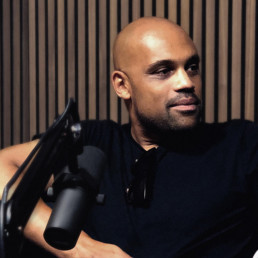
Written by Charles Golding
Charles Golding is a creative director and filmmaker, a disruptor with a passion for change.
CARGO, Charting African Resilience Generating Opportunities, was launched in 2018 to address the lack of inspiring African and African diaspora narratives in education. Since then, awareness has been raised of the bias in representation in the current curriculum.
In the wake of the resurgence of the Black Lives Matter movement in 2020, many groups and organisations have sprung up to address the inequality and lack of diversity in business and education. We cannot be sure whether these organisations were echoing the zeitgeist or capitalising on the moment. Either way, we are now in an unprecedented time where diverse resources and educational tools are available on a scale unimaginable a few years ago. From major publishers, academics and celebrities, it seems many people have thrown their hat into the ring to help address the perceived lack of Black history within our classrooms.
When CARGO began its journey into the world of education, we made a number of conscious decisions that would help define our focus and ambition. As Lawrence Hoo, CARGO co-founder recounts in the BBC documentary The Classroom Revolution: “At school, we weren’t taught white history.” This is an important distinction with the language we use to describe our work.
We choose not to categorise the material we created with the binary simplicity of racial politics. We put language at the heart of our material. For example, we use ‘of African and African Diaspora heritage’ rather than ‘Black’; ‘of European heritage’ rather than ‘white’; ‘enslaved people’ rather than ‘slaves’. Our choice of words help to humanise often dehumanised narratives and define our direction.
Another important distinction is our focus on engagement. We do not want our material to feel like a traditional classroom resources. We approach the creation of CARGO Classroom resources with a desire to create material that will engage, educate and entertain.
Beyond our drive to address the inequality within the secondary school system was a realisation there was a need to energise and enrich the dusty and often antiquated environment of teaching in schools. We understood there was a void beyond racial inequality that spanned generations. The traditional institutions that have governed the distribution of educational material are no longer fit for purpose and have become out of touch with the needs of today’s students. Pupils are demanding change, and all too often, are taking control of their own learning. Due to this demand, we are now developing KS1 and KS2 primary school resources as an addition to the CARGO Classroom KS3 secondary school resources currently available.
No longer can the current frameworks and structures that have governed learning be adequate to fulfil the ideals and aspirations of the coming generations. We want to create materials that would be appropriate for children raised in the age of mass media and gaming. In an environment where information is more accessible than ever before, we know it is important to elevate our material to compete with the ever-changing landscape of digital media.
The CARGO Classroom resources utilise rich, illuminating content from contemporary illustrations, engaging narrative poetry and cinematic videos. We acutely realise the importance of broader representation within teaching and the cross-cultural gains that can be made through a deeper knowledge and understanding. However, the information is only part of the puzzle with the method of delivery and context of the learning being equally as important if we are to inspire engagement and retain learning.
As part of the BBC’s ‘Classroom Revolution ’ documentary, Lawrence visited two children who had been excluded from mainstream education. These students were categorised as hard to reach and subsequently hard to motivate and engage. Their teacher, Rebekah Leese, decided to structure an activity around one of the CARGO Classroom lessons. What you don’t see in the film is as the lesson continues, tutors from other classes gathered in the corridor in amazement as they attempted to look through the windows of the classroom. They couldn’t believe the children stayed engaged for as long as they did. Rebekah remarked: “We are lucky to maintain their concentration for 20 minutes; they were engaged for over an hour.” We now understand one of those students is pursuing history as a subject for further study. Obviously not every classroom will benefit from such a monumental learning experience as a result of CARGO Classroom resources. However, the context and delivery of resources should remain at the forefront of our desire to rejuvenate the landscape of modern learning. It isn’t enough to just supply the material and tell different stories, it’s about how you tell those stories and how we can maximise engagement. We are not interested in ticking boxes; we are here to pull down barriers and broaden ambition.
For more information about CARGO Classroom, please visit www.cargomovement.org/classroom
Desire to study diverse drama and playwrights in schools not matched by current educational landscape
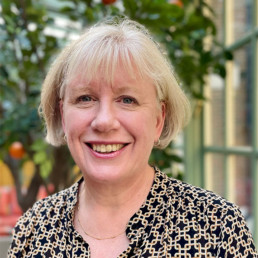
Written by Margaret Bartley
Editorial Director for Literary Drama at Bloomsbury. Since 2002 she has been the Publisher of the Arden Shakespeare and now has editorial responsibility for Bloomsbury's digital platform Drama Online, the Methuen Drama imprint, and the Arden Shakespeare. She is Bloomsbury’s representative on the Lit in Colour Advisory Board and sponsor of Bloomsbury Academic’s Diversity, Equity and Inclusion working group.
90% of drama texts taught at GCSE and 96% at A Level English Literature are written by white playwrights
New research released today by Bloomsbury Publishing, through its Methuen Drama imprint and as part of its Lit in Colour programme, illustrates the popularity and contradiction of teaching drama texts for English Literature at GCSE and A Level in today’s secondary schools in England and Wales.
Drama (excluding Shakespeare) is not compulsory in the GCSE English Literature specification, yet 93% of teachers who responded to Bloomsbury’s survey choose to teach a drama text to a GCSE class. Under 2022 curriculum specifications, drama texts by white playwrights account for 90% of drama texts taught at GCSE and 96% at A Level English Literature. This contrasts with 93% of teachers who said they would like to see a more ethnically diverse range of writers offered by exam boards. This desire from teachers is met with student demand. Of the teachers surveyed, 65% said there was a demand from their students to study more ethnically diverse writers.
Launched in 2020 by Penguin Books UK, alongside race equality think tank The Runnymede Trust, the Lit in Colour campaign aims to support UK schools in diversifying the teaching of English and to increase students’ access to texts by writers of colour and from minority ethnic backgrounds.
Bloomsbury’s Methuen Drama imprint has a world-class play portfolio and playwright relationships that complement and expand on the original Lit in Colour campaign. The programme’s aim is to introduce new plays to the curriculum, offering students access to more diverse, representative and inclusive work, opening up the ways in which all drama texts can be studied, creating new ways to explore plays and contributing to wider discussion and representation in the classroom.
Other findings from the research illustrate the important role drama plays within English Literature at secondary school study:
-
- There are currently just 2 drama set texts by Global Majority writers available at A Level English Literature
- With the right support and resources in place, 84% of respondents said they would be likely to choose a new drama text for GCSE English Literature
- We asked teachers about the support they need when teaching drama set texts: the top three resources listed were recordings of performances (67%), model student answers to exam questions (65%) and resources on social/cultural context (57%)
- 66% of survey respondents said they would like more support to teach texts that tackle issues relating to race or ethnicity
-
- 0% of students answered an exam question on a play by a Global Majority writer in England in 2019*
- In England in 2019*, 79% of GCSE English Literature candidates answered an exam question on a drama text, 349,337 students (65%) answered a question on An Inspector Calls in 2019 assessments
Margaret Bartley, Editorial Director for Literary Drama at Bloomsbury, commented: “The landscape of teaching drama in English schools has remained largely unchanged. Our research shows that there is real appetite for change and that publishers, theatre makers, examiners and teachers need to work together to deliver change to the curriculum. If we empower teachers to switch texts with confidence, students can continue to benefit from the positive impact and influence of studying plays. In the future, those plays will better reflect the student cohort and ensure students see themselves represented in the texts they study. Bloomsbury is committed to playing our part in delivering this change through our proactive programme of new play text publishing, supported by the resources teachers and students need to study and enjoy them.”
Change is coming – what should the future look like?
Real change is coming. Just two years on from the Lit in Colour campaign, efforts are being made by all five major awarding bodies in England and Wales to diversify the set texts within both GCSE and A Level specifications for English and Drama. By 2025 English Literature students in England and Wales will have the option to choose from 10 new modern play texts by writers of colour at GCSE and A Level.
The importance of live performance
Drama can be more accessible than other genres and many enjoy the interactivity that the format brings. A 2015 curriculum change to English Literature removed the necessity for a student to watch a live production, leading to systemic changes in the teaching of drama texts as part of the English curriculum, which are difficult for teachers to counter.
Teaching drama as an experience through live performance is critical in the successful introduction of new plays. When diverse texts are performed in theatres and included on the school curriculum, more could be done to engage with the playwrights themselves. There needs to be more opportunity for playwrights to talk about their work and context, and for schools and teachers to engage with playwrights directly.
Having access to staged performances through services such as Bloomsbury’s Drama Online, which has collections of filmed live performances including those from the National Theatre and Shakespeare’s Globe, is vital to bringing teaching to life, inspiring debate and illustrating what the author or playwright is trying to convey.
Empowering teachers to take a different approach
The research shows a clear desire among teachers to expose pupils to a diverse range of literature, driven by the need to reflect the student cohort and ensure students see themselves represented in the texts they study. There is also a desire to share diversity of thinking and hear voices other than their own. Importantly, this needs to represent a variety of backgrounds and to portray a range of lived experiences including, but not limited to, race-related issues.
Introducing new play texts to the classroom is a big undertaking and requires time and energy from teachers who are already stretched and time-poor. It is clear that teaching a new text is a significant undertaking for teachers who need to create new schemes of work and lesson plans, and research the text’s critical and performance history. Research responses show that teachers prefer to refer to past papers and evidence of the approach taken in assessment for benchmarking their teaching plans. This understandably means teachers often choose to teach the familiar and reliable options with which they have had positive learning and exam outcomes in the past.
Giving teachers the tools they need will empower them to teach new texts and approaches with greater confidence, helping them achieve the success they want for their students.
Teachers also told us that they have more freedom at Key Stage 3 (KS3) to choose diverse texts, as the curriculum is not limited by exam specifications. Teachers can therefore introduce drama texts from diverse writers at KS3 and build confidence in the teaching of these texts, before being limited by exam specifications at higher key stages.
There is also an opportunity to teach the familiar set texts differently, while they remain on the syllabus, by reframing how they are taught. Alongside new texts from diverse writers, existing texts can be taught through a different lens that resonates more with today’s students, such as gender, identity or class. Given the predominance of plays like this, reframing the way established canonical texts are presented offers teachers and students enriching ways to engage with them alongside newer texts.
Methodology
This report draws on research from multiple sources: a quantitative survey, in-depth interviews, roundtable discussion and desk research. Participation was entirely voluntary. Research was carried out by independent research company Oriel Square Ltd and supported by Insightful Research. The online survey, carried out in June 2022, targeted teachers of GCSE English Literature in England and Wales. Of the 141 respondents, 16.3% identified as Black, Asian or of Multiple Ethnic background, compared to 10.4% of teachers in England. Interviews were conducted with a sample of four teachers, selected either because they were taking part in the Lit in Colour Pioneer Pilot programme, ran in partnership with Pearson Edexcel, or because they had responded to the survey and agreed to take part. As a response to the teacher research, Bloomsbury, the National Theatre and Open Drama UK hosted a roundtable discussion with stakeholders from publishers, awarding bodies, theatre organisations, and practitioners, authors and playwrights to discuss how the drama and theatre community could support schools with the teaching of diverse drama texts.
*2019 assessment data was used in the research as the most reliable data, as COVID-19 interrupted live exams data and 2022 data is just being published
Media enquiries: to Ginni Arnold, Head of Corporate Communications at Bloomsbury on ginni.arnold@bloomsbury.com or 07968730247.
Editors’ Notes
Bloomsbury English and Drama for Schools list includes:
- The popular Student Edition series and GCSE Student Editions and Guides featuring plays for more than 14 core set texts for GCSE and A Level English Literature and Drama such as Blood Brothers, A Doll’s House, DNA, The Crucible, and An Inspector Calls.
- The Arden Shakespeare Third series for A Level and beyond, and Arden Performance Editions for performance and study.
- The RSC Shakespeare series, including The RSC Shakespeare: Complete Works and 36 individual play editions.
- New Mermaids series for classic play editions including Doctor Faustus and The Duchess of Malfi.
- The ever-growing Plays for Young People series which offers age-appropriate plays by a diverse selection of contemporary playwrights for young people to perform and study.
Find out more at Bloomsbury.com/DramaForSchools and @MethuenDrama
About Bloomsbury
Bloomsbury is a leading independent publishing house, established in 1986, with authors who have won the Nobel, Pulitzer and Booker Prizes, and is the originating publisher and custodian of the Harry Potter series. Bloomsbury has offices in London, New York, New Delhi, Oxford and Sydney.
About Lit in Colour
Lit in Colour was launched by Penguin Random House and The Runnymede Trust in October 2020. The campaign aims to ensure English literature better reflects contemporary culture and society, to increase understanding around racial equality and to give students access to a diverse range of authors and books.
Lit in Colour published a major piece of research: https://litincolour.penguin.co.uk/ Diversity in Literature in English Schools in June 2021 which reviewed the current state of play in English Literature education and made practical recommendations for change, carried out by an independent team at Oxford University’s Department of Education.
Find more information at penguin.co.uk/litincolour and @PenguinUKBooks
About The Runnymede Trust
The Runnymede Trust is the UK’s leading independent race equality think tank. We generate intelligence to challenge race inequality in Britain through research, network building, leading debate, and policy engagement.
Runnymede is working to build a Britain in which all citizens and communities feel valued, enjoy equal opportunities, lead fulfilling lives, and share a common sense of belonging.
In order to effectively overcome racial inequality in our society, we believe that our democratic dialogue, policy, and practice, should all be based on reliable evidence from rigorous research and thorough analysis.
@RunnymedeTrust |runnymedetrust.org
How we can bring LGBT+ families into primary school storytime with Grandad’s Camper
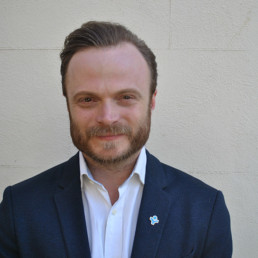
Written by Dominic Arnall
Chief Executive of Just Like Us, the LGBT+ young people's charity.
Diverse families, kindness and respecting difference are all key elements of the primary curriculum that we’re probably all familiar with, but the reality of making these conversations LGBT+ inclusive may not always be so obvious or seem immediately possible.
At Just Like Us, the LGBT+ young people’s charity, we know that growing up LGBT+ is still unacceptably tough. LGBT+ school pupils are twice as likely to be bullied and the same anti-LGBT+ language and bullying also impacts pupils who aren’t LGBT+ but have LGBT+ families or are perceived to against the ‘norms’.
We often hear from primary school staff keen to make changes in their school so that pupils can better learn about the diversity of the world around them – including that some families have two mums or two dads.
So, we want to help all school staff on this journey. We know your time is limited and you may be nervous or unsure where to start with LGBT+ inclusion, so we produce ready-to-go, free resources for primary and secondary schools.
Ahead of School Diversity Week, Just Like Us is releasing a new series of primary storytime resources.
The first in our series is a video of award-winning author Harry Woodgate reading from their book Grandad’s Camper, that you can screen with your primary class.
Grandad’s Camper won the Waterstones Children’s Book Prize Best Illustrated Book 2022 and is a wonderful book to start conversations with your pupils about families that aren’t heteronormative, or the ‘typical’ family set up.
The book follows the story of a girl and her grandad who takes them on a special campervan trip, sharing heartwarming stories of his adventures with the late Gramps, Grandad’s partner who passed away.
Alongside our storytime video resource, we have a reading guide with discussion prompts and ideas on how to use the book as a writing prompt – such as ‘How do you think Grandad and Gramps felt when they went on all their travels?’ and ‘How do you think Grandad feels now Gramps isn’t there any more?’
The resources are free to access for all UK primary school staff – simply sign up for School Diversity Week to download them.
We’re delighted to be working with Harry Woodgate and Andersen Press to open up much-needed conversations around diverse families in primary schools this School Diversity Week, and hope the resources are helpful to primary staff looking to celebrate diverse families.
We’ll also be giving away copies of Grandad’s Camper to UK primary school staff who sign up for School Diversity Week before the end of May 2022.
School Diversity Week is the UK-wide celebration of LGBT+ equality in primary and secondary schools run by charity Just Like Us and takes place 20-24 June this year.
Myth Busting Our Curriculum
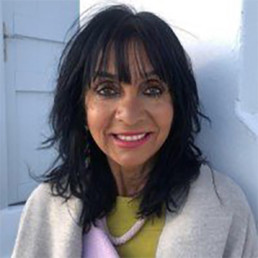
Written by Meena Wood
Meena Kumari Wood is a former HMI (Ofsted), LA Adviser, FE College Principal and Principal of a Secondary Academy, is now a consultant, trainer and leadership coach across the British and International Education sectors.
The island of Zanzibar where I was born was famous – or infamous – on two accounts: clove plantations and slavery. From the 17th century until 1909, spice plantations were worked by Black Africans sold into slavery by Black African tribes to Arab Traders. Zanzibar, East Africa’s slave hub held slaves on Prison Island before transportation to other destinations (Frölich, 2019). The history of Black slavery is far more nuanced than one simply perpetuated by just Whites on Black Africans. Seventeen million East Africans were sold into slavery by Arab traders – a far higher number than those sold into transatlantic slavery. Yet it is usually more common within the History curriculum for students to become familiar with Britain’s involvement in the abolition of slavery in the 19th century, than with the financial benefit Britain gained from the slave trade in the two centuries beforehand.
The alienation of some Black Caribbean and Black African students may in part be attributed to a curriculum, where the contributions and histories of Black people in Britain are not incorporated or openly acknowledged in schools. A Values-Led History curriculum must present a balanced view of colonisation, the British empire and its impact on peoples from Africa, Asia and, nearer home, Ireland. The Windrush scandal report concluded that, in part, it happened precisely because of society’s poor understanding of Britain’s colonial history (Williams, 2018).
The challenge we face as educators is to have a radical rethink of our curriculum. Teaching history through source evidence is not a binary choice of good versus evil. Who chooses the ‘source evidence’ will decide the values and the narrative we want all our students to learn. Winston Churchill, while applauded for his second world war victory, also contributed to atrocities in the empire. During the great Bengal famine (1943), millions died as rice was exported to elsewhere in the empire (Tharoor, 2018). Churchill, however, blamed the famine on Indians ‘breeding like rabbits’ (Safi, 2019).
Generations of young people have been taught that Britain was an intrinsic force for ‘good’ against Nazi tyranny and, therefore, ‘saved the world’ from the forces of evil in the first and second world wars. They may now believe that the British empire was a force for only good. Many children still believe that WW2 was ‘won’ by the British’, and not through a massive world-wide coalition.
Following the Brexit vote in 2016, I met with a class of predominantly White British students; 13-year-olds jubilant about ‘leaving Europe’ and goading another student to ‘go back home to Poland’-reducing him to tears. Their reasoning was that their grandparents had died freeing Britain from the Europeans and now they wanted their freedom from Europe! A mishmash of ignorance and distorted history viewed through their families’ lens influenced these young students and, sadly, resulted in the racist taunts they meted out on fellow East European students.
How do these same children now view the Russia Ukraine war as this may not even be discussed in schools? Don’t our children have the right to be taught that the multifaceted prism of history is a prime influencer on our present lives?
Our students must learn in history and geography of the importance of the unity of the European nations in fighting tyranny and fascism, alongside the role of the ANZAC, African and Asian troops, and what finally led to establishing the European Union. Its continuing relevance to Britain today, now outside of Europe, is key as we face yet another war in Europe.
In our schools we cannot simply continue ‘celebrating diversity’ through famous iconic figures such as Mandela and Gandhi, or scheduling well-intentioned activities during Black History month. Respecting ‘Heritage Matters’ through the curriculum means opening all students’ horizons. Global cultural influences are best threaded through a school curriculum that showcases prominent achievements of a diverse range of individuals in every subject. There is no shortage of inspirational, credible role models.
In science, we can refer to the first Black American African female astronaut Jemison in space (1992). In mathematics, Mohammed ibn-Musa al-Khowarizmi (773 AD) demonstrated the zero in algebraic equations, and by the ninth century, the zero had entered the Arabic numeral system, as we know it today. This example can sit alongside the German mathematician Gottfried Leibniz’s invention of the Step Reckoner ( 1671); a calculus based on the binary system, the genesis of the computer. What about Katherine Johnson, a Black American mathematician, referred to as a ‘computer’? Her calculations of orbital mechanics ( armed with pencil, paper and slide rule), as a NASA employee was critical to the success of the first U.S crewed space flight.
We must empower a nation of young people to be truly proud of their individual and collective heritages. All German schoolchildren learn in history about the holocaust . If knowledge is power then we must enable all our White, Black and Asian children to become more knowledgeable and to learn of the myriad facets of their history. In our classrooms, White British students need to know the contributions made by other nations to the UK economy and society. For instance, if they learn of the British Empire, are students aware of the lasting legacy of the East India Company’s employees in ‘acquiring’ riches, and investing these in Britain’s finest 18 century buildings, even ‘buying’ a seat in Parliament? Thomas Pitt, famously founded the dynasty of two Prime ministers (William Pitt and his son) through the purchase of a diamond, whilst he was Governor in India.
Perpetuating a polarised view of Britain’s role in global history risks creating schisms in our society and risks prejudice, racist attitudes and actions. These are counter to young people developing global citizenship in 2022 and beyond; especially important at a time when the world is shrinking its geo-political boundaries.
To gain deeper understanding and apply the knowledge they learn, young people must acquire critical literacy skills. Only through becoming critical thinkers and readers can they interpret the nuances of history for themselves and come to realise that we are all united more by our similarities than our differences. Atticus Finch, in Harper Lee’s novel To Kill a Mockingbird, sets this as a key life lesson when he tells his daughter,
“You never really understand a person until you consider things from his point of view . . . until you climb into his skin and walk around in it.”
This is how we can hope to create future generations who aspire to change society for the better.
References
Tharoor, S. (2017) Inglorious Empire: What the British Did to India, 1st edn., London: C. Hurst & Co Publishers.
Frölich, S. (2019, August 22). East Africa’s forgotten slave trade. Deutsche Welle [online]. Retrieved from https://www.dw.com/en/east-africas-forgotten-slave-trade/a-50126759 Safi, M. (2019, March 29). Churchill’s policies contributed to 1943 Bengal famine – study. Guardian. Retrieved from https://www.theguardian.com/world/2019/mar/29/winston-churchill-policies contributed-to-1943-bengal-famine-study
Tharoor, S. (2017). Inglorious empire: What the British did to India. London: C. Hurst & Co Publishers.
Williams, W. (2018). Windrush lessons learned, Independent review [HC 93 2020-21]. London: House of Comm
Wood, M. and Haddon, N. ( 2021) Secondary Curriculum Transformed; Enabling All to Achieve; ( Routledge)
How East Stanley Primary School used Rainbow Laces to build a more inclusive environment for its pupils

Written by Adam Walker
Adam is a Primary Teacher at East Stanley Primary School in Durham and is a member and advocate of the LGBTQ+ community.
‘The number one thing is the inclusivity benefits of the resources. Not having pupils question who is playing football and building a much deeper level of respect for each other.’
Creating an inclusive environment for pupils is a top priority for many teachers and their schools. As we celebrate LGBTQ+ History Month, Adam Walker, a teacher from East Stanley Primary school tells us about how using the Rainbow Laces resources, from Premier League Primary Stars, helped create a more inclusive environment for his pupils – increasing their understanding of gender stereotypes and the LGBTQ+ community.
“We had an incident at a football match a few years ago where a pupil from our school called a player from another team a homophobic slur. It was at this point we realised that we needed a solution that we could use to support our pupils in understanding the importance of being inclusive. After a long search to find the right solution, we came across the Rainbow Laces resources from Premier League Primary Stars. A bank of free resources that could educate our pupils around the importance of inclusivity, challenging stereotypes and being a good ally – it was exactly what we were looking for.
At East Stanley we are seeing more girls wanting to get involved in sport. So it was great to see Premier League Primary Stars use male and female professionals in their resources to show balanced representation of real sport. Activities such as ‘Do it like a…’ and ‘Be an ally’ have been popular with the pupils. It has especially given the girls something to look up to and through challenging stereotypes we have mixed teams playing football with a deep level of respect for each other.”
East Stanley has used the Rainbow Laces resources in PSHE lessons at the school to create a more open environment: “The Rainbow Laces resource pack helped us in our PSHE lessons when talking about what it means to be a part of the LGBTQ+ community or discussing gender stereotypes. Now all the pupils are aware of different types of representation; they know that it doesn’t matter if you are homosexual or heterosexual, a boy or a girl, your ethnic descent, or what your first language may be.”
As a member of the LGBTQ+ community, Adam appreciates the difference that resources like Rainbow Laces make: “Now that I have these resources I reflect and think that if material like this had been available when I was in school, it would have helped me to identify and feel more comfortable as a result of inclusive topics being spoken about openly. The more we use material like this in primary schools, the more we will create a better environment for everybody to live freely. It is only going to have a positive influence.”
Speaking about whether he would recommend the resources to fellow teachers, Adam said: “I would 100% recommend them. Knowing how the PSHE curriculum works, Rainbow Laces has been great for us. For other teachers who are looking to increase inclusivity at their school, we have loved the outcomes the resources have given us. Premier League Primary Stars has a wide variety of resources too and there is also the opportunity to build Rainbow Laces – and others resources – into additional lessons around Maths, English and PE. We have seen a real difference and our pupils are happier as a result.”
At the end of 2021 and during the Premier League’s Rainbow Laces campaign, Premier League Primary Stars launched a new resource pack called ‘Rainbow Laces – This is everyone’s game’. The pack, perfect to build into PSHE lessons this LGTBTQ History Month, includes an educational film, and supporting resources, celebrating LGBTQ+ football fans and showcases the power of football to bring people together. The film tells the story of a young Sheffield United fan and member of the LGBTQ+ community, who talks about what football means to her and how it has played a part in helping her to feel proud of who she is.
Premier League Primary Stars has a wealth of dedicated LGBTQ+ and Anti-Discrimination resources – all free – for teacher to use in the classroom linked to English, Maths, PE and PSHE here.
About Premier League Primary Stars
Premier League Primary Stars is a national primary school programme that uses the appeal of the Premier League and professional football clubs to inspire children to learn, be active and develop important life skills. Clubs provide in-school support to teachers, delivering educational sessions to schools in their communities. Free teaching materials ensure the rounded programme, which covers everything from PE and maths to resilience and teamwork, is available to every primary school in England and Wales.
The Premier League currently funds 105 Premier League, English Football League and National League clubs in England and Wales to provide in-school support for teachers.
For more information about Premier League Primary Stars or to register, visit: www.plprimarystars.com
You can also contact Ben Lewis-D’Anna on blewisdanna@everfi.com or 07590465455.

